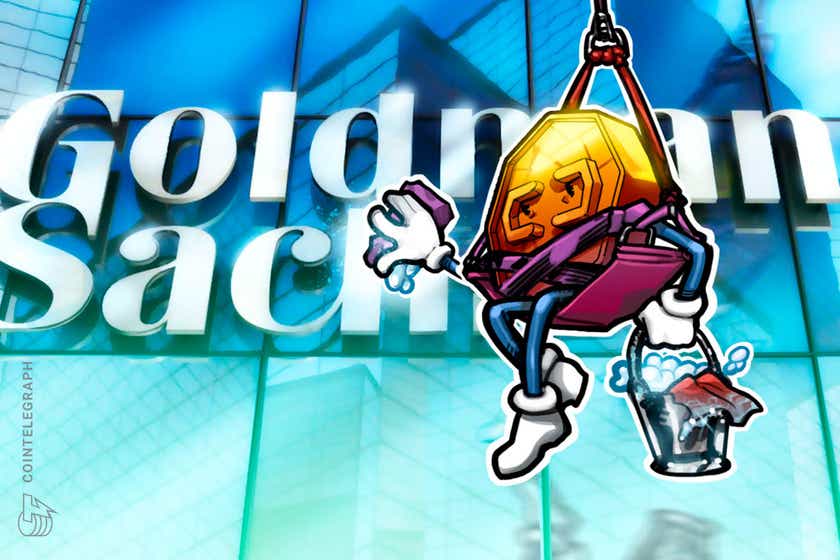Ether (ETH) options are having a fantastic year, with open interest on Deribit — the largest market for these options — having surged 315% to $158 million over the past two months, breaking the $150-million barrier for the first time ever.
Even though Ether first came about only to serve the users of the Ethereum platform as a wallet to use with the apps developed on the platform, it has in the recent past emerged as the clear competitor to Bitcoin (BTC), being the second-largest cryptocurrency by market capitalization.
Emergence of ETH options
ETH options mostly emerged in March 2019 when Derbit launched Ether derivatives on its exchange, including options, futures and perpetuals. Almost a year later, after the Bitcoin halving and crypto’s general 2020 price rally, Ether options have been the prime development to emerge from the altcoin side of the industry.
To capitalize on this new opportunity in the market, Chicago-based crypto exchange ErisX launched in the second quarter the first United States-based Ether futures contracts, which will even be regulated by the Commodity Futures Trading Commission. Even-Malta based exchange OKEx has launched Ether options to get into the mix, and they have gained trading traction since their launch in June.
As observed by crypto derivatives analytics firm Skew in February, investors have anticipated growth in this market when pegged against BTC. Observing the ETH/BTC spread for the six-month period, the at-the-money implied volatility increased to a six-month high of 22%. Implied volatility is the standard deviation of the returns traders are forecasting, and it represents the market’s expectation of how risky an asset will be in the future. The spike implied that investors were expecting higher percentage shifts in the price of ETH (in either direction) in comparison with BTC over the next six months.

Growth isn’t isolated
This phenomenon of Ether options picking up traction in the second quarter is not unique to the altcoin; it goes hand in hand with BTC options and crypto derivatives in general, with the market witnessing record highs of $602 billion in May. What is interesting is that beyond May, investor interest in BTC futures — the largest BTC derivative — has begun to dwindle.

On June 12, BTC futures hit their 2020 low while open interest in Ether options continued to rise to its all-time high. Luuk Strijers, the chief commercial officer of Deribit, discussed this increased interest in Ether options with Cointelegraph, saying:
“We see increased interest in ETH options due to price performance since mid-March, new firms entering the options space and intensified sales efforts by our partners. Open interest is at an all time high at around USD 157m or ~660k contracts out of which 279k or 42% will expire 26 June 2020.”
Even though the implications of Ethereum 2.0’s launch are nuanced, as it will impact miners and investors differently, the perspective in the market seems to be positive toward this change, which is also lucrative for market and investor interest post-Bitcoin halving. Strijers further added:
“We also see an increase in OTC interest resulting in dealers hedging on Deribit, possibly related to a shift in investor interest into ETH post halving and with the upcoming ETH 2.0 launch. Investors seem to appreciate the yield potential 2.0 might offer which could be one of the reasons for the price increase since March. Investors expect that staked ETH will diminish overall supply in the market and drive up the price.”
Use of smart contracts and decentralized finance
As the team behind Ethereum itself puts it, “Ethereum is a decentralized platform that runs smart contracts.” Running on the Ethereum Virtual Machine, smart contracts are tools that help investors exchange assets in a transparent, conflict-free way — without the services of middlemen. Thus, smart contracts enable Ethereum to become a distributed computing network with a blockchain that has multiple use scenarios. These, combined with the decentralized finance ecosystem, also increase investor confidence and encourage institutional involvement.
The rise of altcoins such as Ether, Komodo (KMD) and Cordano (ADA) is evidence of the fact that crypto investors are looking to diversify into avenues of speculation other than BTC. Cointelegraph spoke with Nobert Goffa, the executive manager of ILCoin — a blockchain storage system — who commented:
“Launching Ether options was only a matter of time. For the market as a whole, this is a good sign. More new users and classic instruments mean good financial results for crypto exchanges and, therefore, create a favorable news background. Ultimately, this helps integrate cryptocurrencies into the current economic system.”
Transfer of investor assets and lending
Crypto lending has been key to powering Ethereum’s decentralized finance ecosystem to over $1 billion in locked value. It essentially entails that the borrowers are able to use their crypto assets as collateral to obtain a fiat or stablecoin loan, while lenders provide the assets required for the loan at an agreed-upon interest rate.
According to Darius Sit, a managing partner of QCP Capital — a crypto asset trading firm — the company has seen a significant transfer out of lending and into options and it’s clear in the market that the credit risk from lending to platforms, which are highly unregulated and rampantly rehypothecate, significantly outweighs the yield from interest payments. On the feasibility of options in this unregulated lending scenario, Sit further commented:
“With options, one is able to generate a much higher yield than with lending. One is also able to better control the level of risk. With lending, one can lose the entire loan amount to a default many steps removed from the many layers of rehypothecated loans collapsing. […] With options (given proper risk management), you get a much larger return and the ability to mitigate downside risk.”
The fear of default and high rates from platforms has also contributed to a shift in perception toward options in general. As Sit further added, if crypto prices didn’t recover as quickly as they did after the falls observed on Black Thursday in March, some of the borrowing/lending platforms would have become insolvent and would have defaulted on their obligations. He added: “The fear of this very real systemic risk is a key factor driving interest away from crypto credit into crypto options.”
Institutional interest
As Cointelegraph previously analyzed, there is a slight short-term bullish sentiment that is currently prevalent in the market overall. To get further insight into this involvement, Cointelegraph spoke to Alex Batlin, the CEO of Trustology — a custody platform for crypto assets. He stated: “Institutional Investors buy options because they believe the asset is going to go up in value so they want more exposure to maximise returns,” adding that the “belief is based, in this case, on new revenue opportunities generated by ETH2 staking and the growth of the DeFi market.” On the launch of new platforms that enable the trading of these options, he further said:
“New offerings from platforms like OkEx and ErisX indicate there is enough reason to believe there is institutional interest in ETH options driven by new yield opportunities through staking and defi protocols coupled with lower barriers to entry due to maturing institutional-grade infrastructure.”
Positive price correlation
When observing the correlation between open interest and price over time, it’s noticed that prices rallying since mid-March goes hand in hand with the increase in open interest. Cointelegraph also reported on the possibility of ETH touching $300 in the near future. This adds to the evidence of a bullish sentiment in the market, which would make it even more lucrative for investors to consider, as Sit stated: “The increasing interest and liquidity in the vol market is an encouraging step for the development of ETH as a trading asset. Larger institutional participation would likely be positive for ETH.”
The chart below shows a positive price correlation for ETH/USD when compared alongside the timeline of the aforementioned open interest statistics.

Gauging the indicative analytics and positive market sentiment around ETH options, it is evident that growth isn’t expected to slow down until the launch of Ethereum 2.0, which may prove to provide a paradigm shift for the market itself. However, continuous technological innovation and the involvement of reasonable regulations and institutions will be integral to sustain this upward momentum.
Related: Two Sides of the Same Derivative: Comparing Traditional and Crypto Markets











